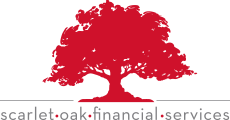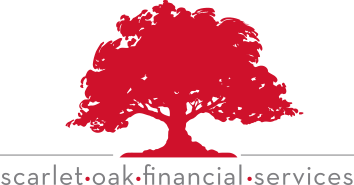Introduction
What is a financial aid loan?
A financial aid loan, commonly referred to as a student loan, is money given to a student to help the student pay for college or graduate school. Loans eventually have to be repaid by you or your child. By contrast, scholarships and grants do not. Nearly 45 percent of all undergraduate students finance part of their education with student loans. Not surprisingly, the percentage is even higher for those students pursuing advanced degrees–more than 50 percent of all graduate students and 75 percent of all professional students borrow money to attend school.
Are there different types of student loans?
Yes. The world of student loans can be complex because of the variety of loan types and lenders. The system of student loans involves the federal government, a network of money-lending institutions (banks),and other unique institutions such as guarantee agencies, student loan servicers, colleges, and state agencies.
Federal student loans
The federal government is the largest provider of student loans. Beginning July 1, 2010, all federal student loans must be obtained directly from the federal government under the William D. Ford Federal Direct Loan program. (Previously, a borrower could obtain a federal student loan either from the federal government under the Direct Loan program or from a private lender who participated in the Federal Family Education Loan (FFEL) program.)
To apply for a federal student loan, borrowers must fill out the federal government’s financial aid form, the FAFSA (Free Application for Federal Student Aid).
Private student loans
Private lenders are the second-largest providers of student loans after the federal government. Private student loans are made by financial institutions directly to students without any involvement by the federal government.
Private student loans differ from the institutional loans discussed above in that they are not guaranteed by the federal government: The bank gets stuck with the loan if you don’t repay it. However, private student loans are closely linked to federal student loans. For example, many graduate students (and some undergraduates) can use one application package to apply for both federal student loans and private student loans. To apply for private student loans, you will need to complete the appropriate lender application (if any) and perhaps the federal government’s FAFSA. Check with your lender.
State student loans
Every state has its own agency dedicated to higher education, and most states offer a variety of student loan programs.
To apply for state student loans, you must complete the appropriate state application. Also, you’ll likely be required to submit the federal government’s FAFSA.
College student loans
Like the states, many schools have their own loan programs. As you might expect, college loan programs (if your college even offers one) vary regarding the interest rate, borrowing limits, repayment terms, and other provisions.
To apply for college student loans, check with the particular college to learn what forms are required. Most colleges use the PROFILE form, a standard financial aid application put out by the College Scholarship Service. Others use an individualized institutional form. In addition, it is likely you will be required to submit the federal government’s FAFSA.
How do I know who holds my student loans?
The institution that lent you the money may not be the same institution that now holds your student loans. Loans are frequently passed from one institution to another. Such a system may be frustrating when it’s time to repay your student loans because you must keep track of where to send your payments.
Your student loans may be held by one of the four following entities:
Lenders
Assuming your student loans are not in default, they may be held by one of four types of lenders:
- Federal government (most likely the Department of Education but sometimes the Department of Health and Human Services)
- Private lender (bank, savings and loan association, credit union)
- College
- State student loan agency
If your loan is in default, chances are the lender will pass it on to either a collection agency or a guarantee agency (discussed below).
Companies on the secondary market
The secondary market consists of financial companies. The secondary market is where lenders sell loans that are not in default if, for business reasons, they don’t want to collect the loans themselves. It is not required for a lender to get your permission before selling your loan on the secondary market; however, the lender should notify you so you will know where to send your payments.
Nearly 30 different companies exist on the secondary market to buy student loans. One of the biggest is the Student Loan Marketing Association, commonly known as Sallie Mae.
Loan servicers
A loan servicer is a company hired either by your lender or a company on the secondary market to collect your loan (assuming you have not defaulted). The loan servicer receives and processes your loan payments, examines deferment or cancellation requests, and otherwise handles all correspondence. The Student Loan Servicing Center is an example of a loan servicer.
Guarantee agencies
Federal student loans are mostly administered through state or private nonprofit agencies called guarantee agencies. A guarantee agency is like an insurance company–it insures your loans and pays off the holder of the loans if you don’t pay. Most loans are sold to a guarantee agency by the original lender or by the secondary market company that bought the loan.
One of the guarantee agency’s primary purposes is to collect student loans that are in default. Consequently, most–though not all–student loans that are in default are with guarantee agencies. All 50 states have a guarantee agency, but some do not collect student loans. In these states, collection activities are usually handled by a different state’s guarantee agency or a private guarantee agency.
Conclusion
Student loans can open the door to valuable educational opportunities, but they come with long-term financial responsibilities. Before borrowing, it is important to understand the differences between federal, private, state, and institutional loans, as well as who services and ultimately holds these loans. By learning how each type of loan works and what to expect in repayment, you can make more informed borrowing decisions and create a strategy that supports both your educational and financial goals. If you are uncertain about which loans are right for you or how they fit into your overall plan, consider consulting with a financial aid advisor or qualified financial professional.
Scarlet Oak Financial Services can be reached at 800.871.1219 or contact us here. Click here to sign up for our newsletter with the latest economic news.
Source:
Broadridge Investor Communication Solutions, Inc. prepared this material for use by Scarlet Oak Financial Services.
Broadridge Investor Communication Solutions, Inc. does not provide investment, tax, legal, or retirement advice or recommendations. The information presented here is not specific to any individual’s personal circumstances. To the extent that this material concerns tax matters, it is not intended or written to be used, and cannot be used, by a taxpayer for the purpose of avoiding penalties that may be imposed by law. Each taxpayer should seek independent advice from a tax professional based on individual circumstances. Scarlet Oak Financial Services provide these materials for general information and educational purposes based upon publicly available information from sources believed to be reliable — we cannot assure the accuracy or completeness of these materials. The information in these materials may change at any time and without notice.



